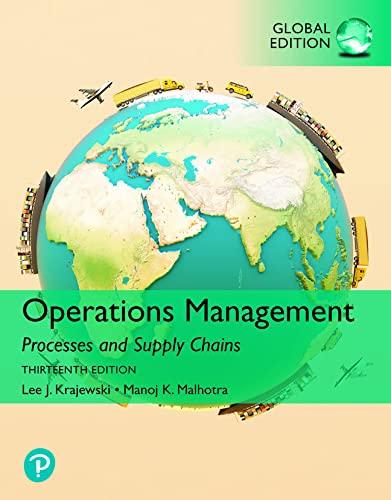When Gary Erickson started out on one of his typical long-distance bike treks in 1990, he expected
Question:
When Gary Erickson started out on one of his typical long-distance bike treks in 1990, he expected to have a great ride. What he did not expect was to come home with the idea for a sports nutrition energy bar that became the genesis of Clif Bar & Company. After consuming most of his supply of Power Bars partway through the 175-mile ride, Erickson could not face the prospect of consuming another one. Instead, he figured he could come up with something better. Something sports enthusiasts would not mind eating in quantities while out on the road or the trail. The result? The CLIF® BAR, an all-natural combination of grains, nuts, and fruit, with far more taste appeal than the standard energy bar of the time. Today, the Berkeley, California-based company has over 100 stock-keeping units, or SKUs, in its product mix, including numerous flavorful versions of the original CLIF BAR plus brands such as LUNA®, The Whole Nutrition Bar for Women™; CLIF Kid Organic ZBaR™, The Whole Grain Energy bar for kids; CLIF Mojo™, The Sweet & Salty Trail Mix Bar; and CLIF Nectar®, an organic fruit and nut bar made with just five ingredients. CLIF BARs were originally distributed through cycling shops and other niche retail outlets but can now be found in a wide variety of retail outlets in the United States, such as Whole Foods, Trader Joe's, REI, and even your local grocery store. From the beginning, CLIF BARs were made from wholesome ingredients. Yet as Erickson looked at the ingredients being sourced for CLIF BAR, he realized that making a healthy food product and sourcing ingredients from farmers, ranchers, and cooperatives using organic growing techniques was a "natural" fit. The company made a commitment to both sustainable growing techniques and using only organic raw ingredients back then, and by 2003, had made CLIF BAR 70 percent certified organic. Since then, six of Clif Bar & Company's CLIF and LUNA brands are now made with 70 percent organic ingredients or more. The impact on the supply chain for sourcing organic ingredients is tremendous. First, there is a limited-but growing-number of organic growers for the ingredients Clif Bar uses. Second, growers who do not use pesticides, herbicides, and genetically modified plants are sometimes at risk of producing lower crop yields. Third, it can be more costly to store the ingredients. And fourth, as more companies commit to environmentally responsible programs and organic ingredients, competition is great for the available global supply. The company's forecasters and planners work hard to manage both the raw ingredient inventory flows from upstream suppliers and the finished goods flows to downstream customers to be sure products are available in the right quantities and right locations. Ordering of raw materials and packaging materials is aggregated to provide efficient sourcing. Production is planned, based on both input and output forecasts, to maximize customer service and minimize inventory. Several times a year, production plans are shared with business partners at all points of the supply chain to make sure that the flow of ingredients and products is smooth, and that inventories do not accumulate at any point in the supply chain beyond planned volumes. Monthly forecasts and changes to plans also are communicated to all supply chain partners. Clif Bar & Company managers know that consumers' tastes for products change regularly, so new flavors and brands are periodically introduced into the various brands. Likewise, flavors are sometimes retired to make room for new ones. As the company's research and development team prepares to move a new product idea from the test kitchen to the manufacturing plant, supply chain managers must get to work to ensure any new ingredients can be procured. As a smaller and privately owned company, Clif Bar does not own its manufacturing plants and distribution centers, and relies on contractual agreements with outsourcers in the United States. These supply chain business partners are carefully chosen for their ability to manufacture and distribute Clif Bar's products, their commitment to quality, and their alignment with Clif Bar's own value system. This value system, referred to as the company's "Five Aspirations," holds that Clif Bar & Company will work toward sustaining its people, brands, business, community, and the planet. Greg Ginsburg, Vice President of Supply Chain, wants to be sure all parts of the supply chain- owned or not-are in agreement with these aspirations. "We look at their energy sourcing, labor practices, and workplace environments. And where we source products from small cooperatives, we'll go as far back as possible to assure those tiny growers know about our expectations," says Ginsburg.
QUESTIONS
1. In what ways does Clif Bar have a sustainable supply chain?
2. Regarding financial responsibility, what business risks does Clif Bar & Company face with so many parts of its supply chain outsourced?
3. What issues or risks to sustainability could Clif Bar & Company encounter if it chose to expand to international markets?
Step by Step Answer:

Operations Management Processes And Supply Chains
ISBN: 9781292409863
13th Global Edition
Authors: Lee Krajewski, Naresh Malhotra, Larry Ritzman





